Premier Projects Transforming the UAE Landscape


Intro
The UAE has become synonymous with rapid development and modernization, making it a focal point for investors and professionals alike. From the soaring skyscrapers of Dubai to the cultural landmarks in Abu Dhabi, the region's projects not only showcase architectural prowess but also reflect the country's ambition to become a global player in various sectors.
Exploring the most notable projects, one can catch a glimpse of the vibrant landscape that defines the UAE today. Among these developments is the real estate sector, which is a major driving force in the local economy. Additionally, infrastructure projects and advancements in technology further complement the growth trajectory of the UAE, offering unique investment opportunities. This article will poke into critical aspects of these premier projects, shedding light on the trends and implications associated with them for local economies and beyond.
As we dissect the various sectors, this piece aims to equip investors, developers, and professionals with in-depth knowledge and insights that can serve as a valuable resource in navigating this dynamic market. From emerging trends to practical investment tips, understanding these premier projects can set the stage for fruitful endeavors in the UAE.
With that context established, let us delve into the first section, focusing on market analysis.
Strategic Overview of the UAE Projects
In the unfolding narrative of the UAE's rapid development, a strategic overview of its projects stands at the forefront. These initiatives not only reshape the skyline of cities like Dubai and Abu Dhabi but also play a pivotal role in positioning the UAE as a global hub for trade, tourism, and innovation. This section delves into the significance and goals behind these projects, laying the groundwork for understanding the broader impact on national development in various aspects.
Significance of Projects in National Development
Economic Growth
Economic growth in the UAE is fueled by diverse and ambitious projects spanning real estate, energy, and technology. The key characteristic of this growth lies in its multifaceted approach, tapping into both traditional sectors such as oil and gas and emerging industries like tourism and technology. One advantageous element of focusing on economic growth is the enhancement of job opportunities for local and expatriate populations, fostering a vibrant labor market.
However, while this growth can foster prosperity, it also poses risks. Dependency on fluctuating oil prices can create vulnerabilities in the economy. This is especially relevant in the context of the shifting global energy landscape where sustainability and renewable sources take center stage.
Infrastructure Enhancement
Infrastructure enhancement serves as a backbone for supporting the growing population and commerce in the UAE. Projects like the expansion of metro systems and improvements to road networks are crucial for seamless connectivity. Notably, the key characteristic here is that such infrastructural developments not only benefit transportation but also stimulate local economies by linking communities and facilitating business operations.
While the high-quality infrastructure enhances quality of life, it requires constant investment and maintenance, which can stretch governmental budgets. The challenge remains to balance expenditure with sustainable growth.
Social Impact
The social impact of these projects cannot be overlooked. The initiatives lead to the creation of recreational spaces, educational institutions, and health facilities, contributing to an improved standard of living. The key characteristic is their holistic approach towards development, ensuring that advancements in infrastructure and economy translate into social benefits.
Yet, this development can sometimes lead to social disparities, particularly in rapidly developed areas where older communities may feel sidelined. Therefore, careful planning and inclusion are essential to ensure that the benefits of growth reach all segments of society.
Goals of Urban Development in the UAE
Urban development goals in the UAE are entrenched in a vision that aims for long-term progress while addressing immediate challenges. These aspirations revolve around sustainability, innovation, and cultural integration.
Sustainability
Sustainability is increasingly becoming a cornerstone of urban development in the UAE. Projects are being designed to minimize resource consumption and environmental impact, such as utilizing solar energy and implementing water conservation measures. The distinguishing feature here is the UAE’s commitment to meeting the goals of global initiatives, including the Paris Agreement. This makes sustainability not just a choice, but a necessity.
The benefits of prioritizing sustainability are profound, yet the initial investment can be substantial for developers. The challenge lies in creating a balance between financial feasibility and ecological consciousness.
Innovation
Innovation drives forward-thinking approaches in urban planning. The UAE’s emphasis on integrating advanced technologies into public services and infrastructure paves the way for smarter cities. Notably, this facet of development enhances efficiency and service delivery, making cities more livable.
However, reliance on technology poses its own set of challenges. Issues like data security and the digital divide need addressing to ensure that all communities benefit from these innovative solutions.
Cultural Integration
Cultural integration is a hallmark of successful urban development. The UAE is a melting pot of cultures, and its projects reflect this diversity. Incorporating cultural elements into urban design ensures that spaces resonate with the community's identity, fostering social cohesion.
While benefitting from rich cultural narratives, there might be challenges with conflicting cultural values among various communities. As such, urban planners must navigate these complexities carefully to maintain harmony and inclusivity in growth.
The strategic overview of the UAE projects captures the essence of a nation propelling itself into the future while intricately weaving together economic, infrastructural, and social threads.
Key Real Estate Developments
Key real estate developments in the UAE are a cornerstone of its economic and social fabric. These projects not only reflect the architectural innovation that the country is known for but also significantly contribute to the overall growth and diversification of the economy. With a range of luxury and affordable options, these developments cater to various demographics, thereby enhancing the livability of urban areas and attracting international attention and investment.
Developers are keen to harness the appeal of the UAE as a melting pot of cultures while simultaneously addressing the pressing need for sustainable and inclusive accommodation solutions. This section sheds light on the trends and initiatives shaping the landscape of real estate today, which are vital not only for current residents but also for enticing expatriates and tourists alike.
Luxury Property Trends
High-End Residential Projects
High-end residential projects are redefining the luxury real estate market in the UAE. These developments are distinguished by their opulent features and state-of-the-art amenities. Think of properties that include private pools, spas, and panoramic views of iconic landmarks. They are typically located in prime areas, making them attractive not just as homes but also as status symbols.
The attraction to these luxury projects stems from buyers’ desire for exclusivity and uniqueness. One unique feature of many high-end residences is the integration of technology, with smart home systems providing comfort and convenience.
However, it's worth noting that while these projects can offer significant returns on investment, they often come with a higher price tag and associated risks. The potential for market saturation is also a concern as new developments emerge frequently.
Luxury Mixed-Use Developments
Luxury mixed-use developments present a dynamic model that combines residential, commercial, and recreational spaces. Typically, these developments create a self-sufficient community where residents have access to shopping, dining, and entertainment just a stone's throw away from their doorstep. This concept enhances the quality of life for residents and takes urban living to a new level.
An essential characteristic of these mixed-use developments is their ability to foster a sense of community, making them a sought-after choice for those looking to live in a vibrant environment. For instance, developments like Dubai Marina Walk offer numerous amenities that support an active lifestyle, increasing the appeal among young professionals and families alike.
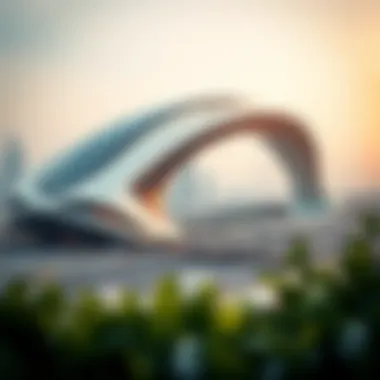
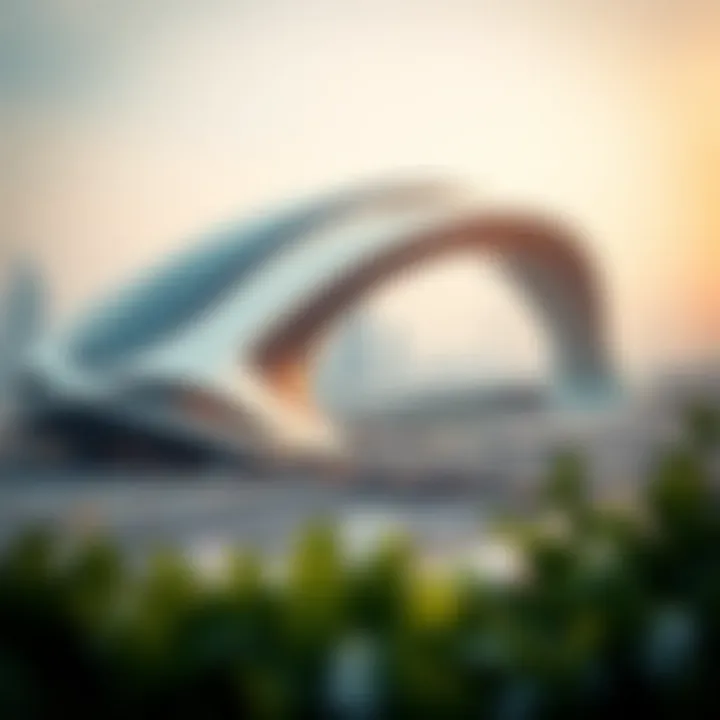
While these projects often encourage urban density and can boost local economies, there are challenges as well. Additionally, they can sometimes lead to overcrowded facilities if not planned meticulously, impacting the quality of life for residents.
Affordable Housing Initiatives
Government-Backed Projects
Government-backed projects play a critical role in addressing the housing shortage in the UAE. These initiatives are designed to offer affordable housing options that benefit lower and middle-income families. By providing subsidies and incentives for developers, the government aims to create more inclusive communities.
One unique feature of these projects is the regulatory framework that ensures accountability, making them a safer investment for both developers and buyers. Projects like Abu Dhabi’s Affordable Housing cater to a pressing need while also promoting social cohesion in communities.
However, it’s crucial to monitor these projects closely, as ongoing maintenance and quality standards can sometimes become an issue in the long term, affecting the living experience of residents.
Private Sector Contributions
The private sector's involvement in affordable housing is gaining traction, driven by the realization that meeting housing demands can yield profitable opportunities. Developers are beginning to embrace innovative design techniques that prioritize cost-efficiency while maintaining quality standards.
With many private sector initiatives focusing on sustainability, these projects often incorporate green building practices that resonate well with today’s environmentally-conscious buyers.
The challenge here lies in balancing profit with accessibility, as there can often be a trade-off between keeping costs low and ensuring quality, which can affect the long-term viability of the project.
The real estate sector in the UAE continues to evolve, illustrating both the opportunities and challenges within its unique landscape. By addressing luxury as well as affordability, it paints a comprehensive picture that reflects the nation’s diversity and ambition.
Innovative Infrastructure Projects
Innovative infrastructure projects play a critical role in shaping urban landscapes. In the UAE, these projects not only aim to improve the quality of life for residents but also set the stage for economic and social growth. When we discuss infrastructure, we're talking about the backbone of a nation’s connectivity, efficiency, and sustainability. With a diverse population and heavy traffic in urban areas, having reliable transport options and smart urban solutions becomes imperative.
Transportation Enhancements
Transportation enhancements form a key part of this initiative, comprising various projects that each contribute uniquely to the greater goal of transforming city life in the UAE.
Metro Expansion
Metro expansion is one of the standout features within the Abu Dhabi and Dubai transport networks. Known for its efficiency, this project is quite popular among commuters who value fast and timely travel. The Dubai Metro for example, is lauded for its punctuality and cleanliness.
One unique feature of the metro system is its automatic operation - it uses no drivers. This cuts down operational costs yet maintains safety standards. The expansion plans aim to connect additional areas, thereby augmenting accessibility for all, including those in rapidly developing suburbs.
However, expansion brings its challenges too. Construction delays can hamper daily commutes and disrupt local businesses. Despite these downsides, the broader benefits of reduced road traffic and improved air quality are significant enough to outweigh the drawbacks.
Airport Developments
With the UAE being a major global travel hub, airport developments have been crucial in boosting tourism and business travels. Projects at Dubai International Airport and Abu Dhabi International Airport have turned them into some of the busiest and most sophisticated airports globally.
By focusing on customer experience through modern amenities and efficient logistics, airport developments effectively create a welcoming environment for international travelers. A unique aspect of these projects is their incorporation of high-tech security systems that streamline passenger processing while ensuring safety.
However, infrastructure upkeep and the financial burden of these vast projects can be daunting for the local government, especially amid economic fluctuations. Yet, the sheer volume of international travelers supports the case for these expansive developments.
Road Networks
Upgrading road networks is another vital element that deserves attention. Well-maintained roads not only enhance mobility but also contribute to reducing travel times. The UAE's road networks are designed to handle a high number of vehicles, thanks to their expansive highway systems.
A distinguishing characteristic of these roads is their multi-lane designs, which improve traffic flow significantly. Moreover, innovative features such as smart traffic signals that adapt to real-time traffic conditions can be found in many areas. These smart adjustments can lead to reduced congestion and improved fuel efficiency for motorists.
Nonetheless, extensive roadwork can sometimes lead to temporary road closures or detours, causing inconvenience for drivers. Balancing these factors is crucial to ensuring the effectiveness of road improvements.
Smart City Initiatives
The UAE has also embraced the concept of smart cities, which integrate technology into their urban planning and services.
Digital Infrastructure
Digital infrastructure forms the foundation for smart city initiatives. This aspect encompasses everything from internet services to advanced communication networks that allow for seamless data transfers across various platforms. The introduction of high-speed Internet not only enhances connectivity but also boosts the performance of local businesses as they adapt to online engagement.
A standout feature of the digital infrastructure in cities like Dubai is WiFi UAE, a nationwide initiative that provides free internet access across public spaces. While beneficial for ensuring locals and tourists can navigate easily, funding and managing this service can pose ongoing challenges for municipal leaders.
Smart Services Implementation
Implementing smart services has revolutionized how residents interact with their city. From smart waste management systems that optimize collection routes to energy-efficient street lighting, each initiative aims to improve sustainability.
One key characteristic of these services is their reliance on data analytics to drive decision-making. This analytical approach can lead to substantial cost savings and more effective resource allocation. However, effective implementation requires a robust IT infrastructure, something not all regions may yet possess.
Tourism and Cultural Projects
Tourism and cultural projects play a pivotal role in the UAE’s dynamic landscape, contributing not only to economic growth but also to the preservation of cultural heritage. These ventures attract millions of visitors each year, showcasing the rich tapestry of tradition and modernity. The power of tourism goes beyond mere financial gain; it fosters community pride and global recognition while inviting investment and innovation in various sectors. As the UAE positions itself as a world-class destination, understanding the nuances of its tourism and cultural projects becomes essential for investors and professionals alike.
Iconic Landmarks
Museums
Museums in the UAE stand as gateways to understanding the nation's past, present, and future. They tell stories that resonate with both locals and tourists, offering insights into the diverse cultural influences that shape Emirati identity. For instance, the Louvre Abu Dhabi is more than just an architectural masterpiece; it serves as a bridge connecting various cultures through art. This unique characteristic of museums provides educational benefits while also enhancing the country’s status as a cultural hub. However, the costs of developing and maintaining such institutions can be quite hefty.
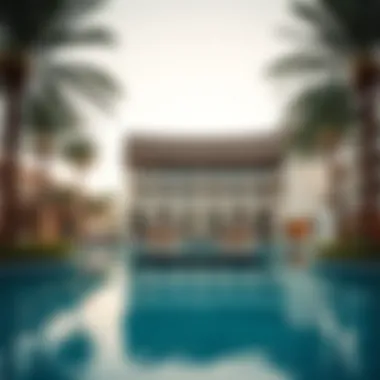

- Key Characteristics: Educational hubs, cultural fusion, modern architecture.
- Advantages: Attracts tourists, facilitates cultural exchange, promotes historical understanding.
- Disadvantages: High maintenance costs, requiring ongoing investment.
Cultural Centers
Cultural centers in the UAE are vital for community engagement and cultural exchange. They function as platforms for artistic expression and social interaction, fostering a sense of belonging among residents and visitors. A prime example is the Sharjah Art Foundation, which showcases local and international artists, thereby enriching the arts scene in the region. This aspect makes cultural centers a crucial element for the overall objective of promoting cultural coherence in an increasingly globalized world.
- Key Characteristics: Local talent showcase, community engagement, diverse programming.
- Advantages: Strengthens community ties, encourages local artists, offers diverse programs.
- Disadvantages: Reliance on funding and resource allocation.
Theme Parks
Theme parks such as IMG Worlds of Adventure and Dubai Parks and Resorts offer a blend of entertainment and cultural experiences. They attract families and thrill-seekers alike, providing a space for leisure that sits side-by-side with cultural learning opportunities. The unique feature of these parks lies in their ability to amalgamate adventure with elements of Emirati culture, making them a popular choice for families on holiday. Nevertheless, they are capital-intensive ventures that require careful planning and market research to ensure sustained interest.
- Key Characteristics: Adventure and thrill rides, cultural themes, family-friendly environments.
- Advantages: Boosts local economy, attracts international tourism, provides recreational options.
- Disadvantages: Seasonal fluctuations in visitor numbers, high operational costs.
Sustainable Tourism Initiatives
Eco-Tourism Strategies
Eco-tourism strategies in the UAE aim at balancing the growth of travel and the preservation of the natural environment. Initiatives like the eco-friendly lodges in the Al Wadi Nature Reserve offer guests a chance to immerse themselves in nature while promoting conservation efforts. This unique approach draws environmentally conscious travelers, aligning with global trends towards sustainability. However, the challenge lies in ensuring that such initiatives remain economically viable while also protecting natural resources.
- Key Characteristics: Conservation focus, community involvement, minimal environmental impact.
- Advantages: Preserves natural habitats, attracts niche markets, promotes cultural understanding.
- Disadvantages: Potentially smaller market size, high initial investment.
Responsible Practices
Responsible tourism practices emphasize the importance of ethical engagement for both tourists and operators. This approach ensures that local communities benefit from tourism while minimizing negative impacts on the environment and society. Campaigns encouraging visitors to respect local customs and support local businesses highlight the key characteristic of responsible practices as fostering sustainable relationships. Yet, there’s the risk of miscommunication or lack of awareness among tourists, which can lead to unintended consequences.
- Key Characteristics: Ethical tourism, community benefits, local engagement.
- Advantages: Strengthens communities, promotes positive experiences for visitors, encourages sustainable practices.
- Disadvantages: Requires constant education and awareness-raising efforts for tourists.
Technological Advancements in Development
Technological advancements are the backbone of modern development, shaping projects in the UAE and influencing every facet of urban life. They usher in a wave of innovation that serves the economy, enhances quality of life, and reinvents how real estate and infrastructure are approached. The integration of technology into construction and project management is not just an option anymore; it’s a necessity. It brings forth numerous benefits such as increased efficiency, shortened project timelines, and ultimately, elevated standards.
PropTech Evolution
Market Disruption
Market disruption in PropTech has finally changed how real estate functions in the UAE. This concept taps into innovative technologies providing solutions that elevate market standards. With data analytics and AI making waves, traditional practices can seem outdated. Properties that were typically overseen through tedious manual processes are now streamlined through digital means. For many developers, this transformation is a game-changer.
The key characteristic of this disruption is its ability to transform the way transactions and property management occur. Tech-savvy investors find that tools like virtual tours and blockchain for transactions minimize time and costs, thus making it an attractive choice for savvy investors. The unique feature of this market disruption lies in its data-driven decision-making practices, leading to increased transparency and reduced risk. However, the challenge remains—adopting these technologies can involve substantial upfront investment, putting off less financially robust developers.
Investment Opportunities
Investment opportunities in PropTech present a vast pool for both local and foreign investors. The sector appeals due to its rapid growth trajectory, with everything from smart buildings to IoT-enabled homes capturing attention. These investment opportunities are clearly significant, given the increase in demand for sustainable and tech-integrated living spaces.
The key characteristic of investing in PropTech is the amalgamation of technology and real estate, a combination tailored for the modern consumer. With unique platforms emerging that facilitate property management or real estate transactions online, the market is ripe for investments. Advantages include significant potential growth and diversification for investors, but there is no hiding the disadvantage of volatility; tech markets can shift quickly, and investors need to tread carefully.
Energy Solutions for Projects
Renewable Energy Integration
Renewable energy integration represents a critical focus for sustainable development in the UAE. This not only aligns with global trends but also helps the region meet its environmental goals. Buildings and developments equipped with solar panels and energy-efficient technologies are becoming increasingly common.
A key characteristic of renewable energy integration is its potential to reduce long-term operational costs significantly. It becomes an appealing choice for developers who aim for sustainable certification and claim advantages in marketing their projects to environmentally conscious consumers. Emphasis on this aspect not only helps mitigate the ecological footprint but also promotes a positive image. However, establishing this technology can require a hefty initial financial commitment, which some developers view as a disadvantage.
Energy Efficiency Measures
Energy efficiency measures enhance the sustainability of projects across the UAE. These strategies encompass various implementations such as energy-efficient HVAC systems, smart lighting solutions, and advanced building materials. Incorporating such measures leads to lower energy bills and a reduced carbon footprint.
The key characteristic lies in the push for minimizing waste and maximizing resource use, making it a beneficial choice for developers looking to cut costs and adhere to regulations. Additionally, they meet consumer demand for greener living options, ensuring a wider market reach. Unique features of energy efficiency measures may include tax incentives or support from local governments. While advantages abound, resistance from stakeholders who prioritize immediate cost savings over long-term benefits can often hinder implementation.
The trajectory of technological advancements in the UAE is poised to redefine urban living, driving economic growth and setting a new paradigm for future developments.
Embracing technology in the UAE's developmental landscape reveals an endless horizon of opportunities and challenges. Investors, developers, and professionals engaged in these initiatives must remain alert and adaptable to navigate this fast-evolving sector.
Investment Landscape
The investment landscape of the UAE is marked by its dynamic growth and robust opportunities, making it a focal point for investors around the world. The rapid development and infrastructural advancements in regions like Dubai and Abu Dhabi are significant. They contribute to a landscape that is not just diverse but also welcoming to foreign and local investors alike. As we explore this topic, it is clear that understanding the intricate details of both foreign and local investments is crucial for navigating this vibrant market.
Foreign Investment Trends
Regulatory Framework
The regulatory framework in the UAE serves as the bedrock for its thriving investment landscape. A key characteristic is the ease of setting up a business, particularly in the free zones, which offer 100% ownership and zero taxes for a specific period. This feature attracts a multitude of foreigners looking to invest without the administrative hurdles often found elsewhere. Each emirate has its regulations, yet they all share common traits that make them appealing.
One particular advantage of the UAE’s regulatory environment is its commitment to creating a business-friendly atmosphere. Thus, businesses can thrive without excessive bureaucratic interference. However, notable disadvantages might include the potential for sudden regulatory changes, which could catch investors off-guard. Overall, the benefits of the UAE’s regulatory framework often outweigh the downsides, making it a solid choice for investors looking towards the emirate's prosperous future.
Key Sectors for Investment
When examining foreign investment trends, certain sectors stand out due to their growth potential and profitability. The real estate sector, for instance, continues to draw considerable interest. Properties in luxury developments like those in Dubai Marina present lucrative opportunities for high-net-worth individuals.
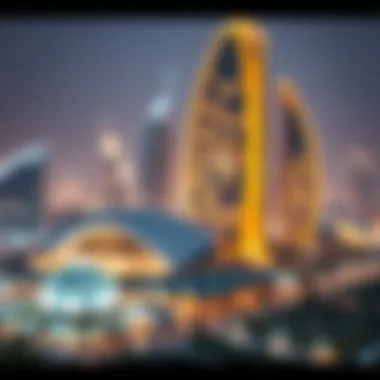
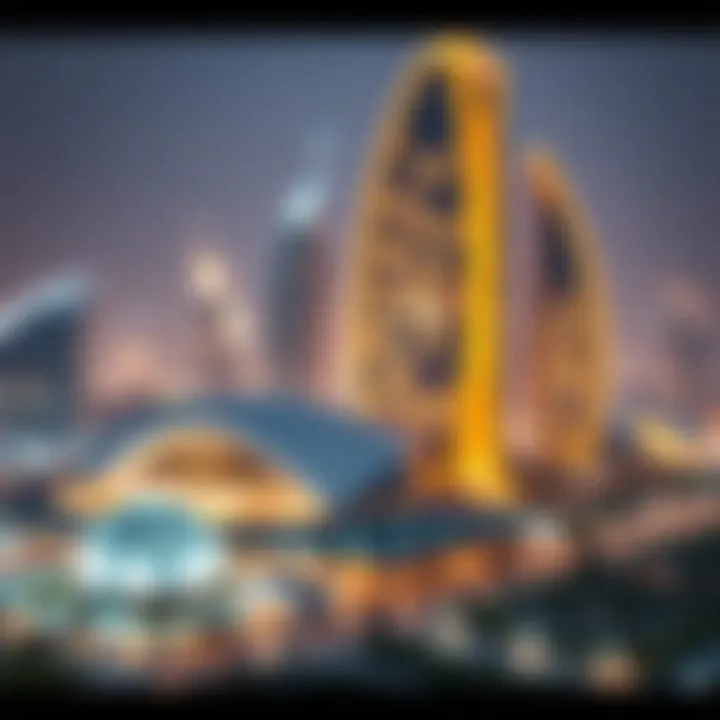
Another noteworthy area is tourism, bolstered by the UAE's push to diversify its economy beyond oil. The unique feature of these sectors lies in their resilience and continuous evolution, catering to global trends and consumer preferences. However, the property market can be fickle; investors need to be ready to adapt to changing demand dynamics. Still, the promising prospects within the key sectors make them a favored choice for investors keen on capitalizing on the UAE's growth trajectory.
Local Investment Opportunities
Emerging Markets
Emerging markets in the UAE are gaining traction, especially as the country's economy continues to diversify. The tech sector, particularly, is becoming a hotbed of innovation, supported by government initiatives aimed at transforming the region into a tech hub. A defining feature of these emerging markets is the emphasis on innovation and adaptability, which bodes well for future growth.
Investors looking to partake in these sectors can benefit from the government’s pro-innovation stance, which often translates into reduced bureaucracy and open-access policies. This environment, however, does carry risks due to fluctuating economic indicators and global market influences. The emerging markets still provide fertile ground for investors willing to take smart risks in pursuit of growth.
Real Estate Potential
The real estate potential within the UAE is substantial, with ongoing projects that reshape the skyline and enhance living standards. A hallmark of this sector is the diverse range of property options available, from luxurious villas to affordable housing developments, catering to various segments of the population. Investors can find appealing opportunities in developed areas while also exploring upcoming neighborhoods.
In particular, the residential real estate market is bolstered by population growth and urbanization, making it a sound investment choice. Yet, potential pitfalls include price volatility driven by over-supply in certain areas. Thus, while the UAE real estate market offers robust opportunities, investors are encouraged to conduct thorough research and consider market conditions before diving in.
Challenges and Considerations
When it comes to the ambitious projects unfolding in the United Arab Emirates, the path is seldom smooth. The importance of addressing challenges and considerations in this arena cannot be downplayed. Not only do these issues reflect the prevailing market conditions, but they also have direct implications for stakeholders involved in various sectors. From economic fluctuations to regulatory hurdles, understanding these hurdles is key to navigating the complex landscape of development in the UAE.
Economic Fluctuations
Market Responses
Economic fluctuations present a substantial concern for investors and developers alike. When markets shift unpredictably, the strategies that once proved successful may need reconsideration. A key characteristic of market responses is their typical reaction to these economic ebbs and flows. Investors who grasp how to decode these fluctuations can better position themselves for success. For example, during downturns, many developers tend to pivot towards more affordable housing options or reassess project timelines, thereby minimizing losses.
Market responses are beneficial in that they allow for more flexible planning and investment. Understanding these responses empowers stakeholders to make calculated moves instead of being swept away by market tides. However, the unique feature here is that while market responses can mitigate losses, they can also lead to over-cautiousness that stifles growth. Assessing both advantages and disadvantages becomes crucial in this context.
Adapting Strategies
Another poignant aspect of challenges in UAE development is adapting strategies to shifting landscapes. With rapid technological advancements and global economic shifts, standing still is not an option. Investors must continuously revise their strategies to stay ahead. The key characteristic of adapting strategies is flexibility. A flexible plan allows developers to harness the current trends, whether through investments in eco-friendly tech or partnerships for smarter city projects.
What makes adapting strategies especially valuable is their emphasis on proactive measures rather than reactive. Investors equipped with the foresight to adapt can benefit greatly from changes in the market. However, it's worth noting that there can be drawbacks; over-adapting could lead to losing sight of core objectives or overlooking long-term vision.
Regulatory Hurdles
Licensing Issues
As much as the UAE landscape is ripe with opportunities, licensing issues can throw a significant wrench in projects. These challenges often stem from stringent regulatory requirements aimed at maintaining the integrity of development. A notable characteristic of licensing issues is the time-consuming nature of obtaining necessary approvals. Investors willing to navigate this process can ultimately gain a competitive edge, but delays can also escalate costs and deter potential projects.
The unique feature of licensing issues reveals that while they can stifle progress, they also serve to protect public interests and ensure quality. Therefore, weighing the advantages of a thorough licensing process against its inherent delays is essential for stakeholders.
Compliance Requirements
On a similar note, compliance requirements play a pivotal role in steering project development in the UAE. By adhering to legal regulations and standards, developers can foster trust and credibility in their projects. The key characteristic of compliance requirements lies in their comprehensive nature, encapsulating everything from environmental regulations to labor laws.
The advantage of adhering to these requirements is the assurance of sustainability in development. Stakeholders who invest the effort to remain compliant are better positioned to build lasting relationships with local governments and communities. However, failure to comply can spell disaster, leading to legal repercussions or project delays. Navigating through compliance thus becomes not merely an obligation but a strategic imperative in the UAE development landscape.
In summary, recognizing and addressing these challenges and considerations can significantly influence project outcomes. Investors and developers must adopt a nuanced approach to these hurdles to capitalize on the vibrant opportunities that the UAE continues to offer.
For further insights into economic fluctuations and regulatory frameworks, refer to resources like Wikipedia or government websites such as UAE Government Portal. Understanding these variables can provide a nuanced perspective on navigating future projects.
Future Directions and Prospects
The landscape of development in the UAE is ever-evolving, with significant emphasis placed on future directions and prospects. This section provides a thoughtful examination of the trajectories that major projects are heading towards, while dissecting the opportunities and challenges that lie ahead for investors and stakeholders. The focus on future directions is vital because it helps investors align their strategies with the ambitions of national development, ultimately contributing to a more robust economy.
Vision for the Future
Long-Term Goals
Long-term goals represent the guiding principles that shape the strategic framework of projects in the UAE. They are not mere aspirations; they reflect a commitment to sustainable growth and innovation. One key characteristic of these goals is their forward-thinking nature, allowing for flexibility as market dynamics change.
A standout feature of long-term goals is the integration of sustainability into the core of development plans. This has proven beneficial, not just in preserving natural resources but also in appealing to environmentally-conscious investors. However, one disadvantage could be the initial investment cost, as establishing sustainable systems often requires significant upfront expenses. Nevertheless, the long-term benefits are undeniably compelling, making sustainability a prominent choice for projects in the UAE.
The foresight of implementing sustainable practices today will lead to the thriving communities of tomorrow.
Innovative Collaborations
Innovative collaborations embody a new-age approach in the UAE's project landscape, uniting various stakeholders to pool resources, knowledge, and expertise. This synergistic strategy enhances efficiency and creativity, optimizing project outcomes. A notable characteristic of these collaborations is their emphasis on public-private partnerships, enabling both sectors to leverage strengths and mitigate risks.
One unique aspect of innovative collaborations is the integration of technology across different sectors, from real estate to infrastructure, which fosters rapid advancements and improved service delivery. While beneficial, these partnerships can face challenges such as differing goals among parties and the complexities of managing shared resources. However, the long-term payoff of these innovative partnerships is likely to drive the UAE's development further.
Predictions for Market Growth
Forecasts and Analyses
Forecasts and analyses serve as the backbone for strategic planning, offering invaluable insights into future market conditions. The rigorous examination of data and trends provides a clear picture of growth trajectories. A key characteristic of this analysis is its reliance on data-driven insights, allowing stakeholders to make informed decisions.
One of the unique aspects of these forecasts is their forward-looking nature, encompassing varying scenarios that help investors prepare for potential market shifts. This analytical foresight is advantageous as it informs better investment strategies, but it may also lead to over-reliance on projections, which are subject to change due to unforeseen economic factors. Hence, while useful, stakeholders should maintain a degree of flexibility in their approaches.
Investment Strategies
Investment strategies in the UAE are increasingly becoming tailored to capitalize on emerging trends and opportunities in developments. A distinctive aspect of these strategies is their focus on diversification, allowing investors to mitigate risks by spreading investments across various sectors such as real estate, tourism, and technology. This versatility not only safeguards their investments but also enhances the overall resilience of the portfolio.
The strength of these strategies lies in their adaptive nature, encouraging investors to stay attuned to market fluctuations and innovation. However, a drawback could be the complexity of managing diverse assets, requiring specialized knowledge and expertise in different domains. Still, the potential for robust returns makes these strategies a popular choice for stakeholders navigating the UAE’s vibrant landscape.
As the future unfolds, the prospects for growth are certainly promising, but they will require a proactive mindset and a willingness to adapt to an ever-changing environment.



